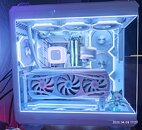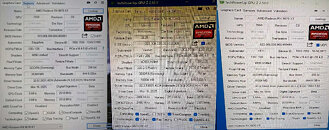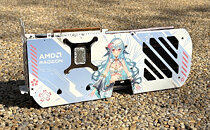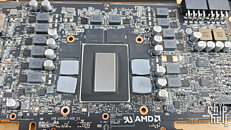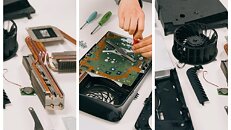
PC Enthusiasts Discover Samsung GDDR6 Modules in Radeon RX 9070 XT Cards
Just before the official launch of Radeon RX 9070 XT graphics cards, members of the Chiphell forum expressed concerns about unnamed evaluation samples exhibiting worrying memory module temperatures. Days later, Western review outlets published similar findings across several board partner specimens. Typically, pre-launch and retail units have utilized SK hynix GDDR6 VRAM modules—TechPowerUp's W1zzard uncovered numerous examples of the manufacturer's "H56G42AS8DX-014" model during teardown sessions. Curiously, Chinese PC hardware enthusiasts have happened upon Radeon RX 9070 XT cards that utilize Samsung GDDR6 memory modules. It is not clear whether Yeston has outfitted its flagship Sakura Atlantis OC SKU with Samsung components from the very beginning, but one owner documented a GPU-Z diagnostics session—late last month—showing "GDDR6 (Samsung)" onboard. Earlier this month, insiders posited that NVIDIA was in the process of changing its main GDDR7 memory vendor—from Samsung to SK hynix—for the GeForce RTX 50-series.
According to a recent Guru3D news piece, additional cases were reported. Online conjecture points to "higher end" custom models being updated with "cooler" modules. Hilbert Hagedoorn—Guru3D's head honcho—has gathered compelling information via community feedback channels: "the transition to Samsung memory has yielded noticeable thermal advantages. Early reviews and comparisons indicate that the new memory modules help lower temperatures significantly. Custom RX 9070 XT models running demanding benchmarks like Furmark have demonstrated memory temperatures of 75°C or lower without necessitating an increase in voltage or a reduction in clock speeds. Notable manufacturers, including Sapphire, XFX, and GIGABYTE, have already integrated Samsung's GDDR6 into their custom variants. However, as of now, AMD has not authorized its partners to explicitly differentiate between models with SK hynix and Samsung memory, likely to avoid confusion among consumers and maintain a consistent product lineup." Additionally, TechPowerUp forum members have found Samsung GDDR6 memory on Radeon RX 9070 XT and RX 9070 custom models. Thanks for the tip, Fluffmeister.
According to a recent Guru3D news piece, additional cases were reported. Online conjecture points to "higher end" custom models being updated with "cooler" modules. Hilbert Hagedoorn—Guru3D's head honcho—has gathered compelling information via community feedback channels: "the transition to Samsung memory has yielded noticeable thermal advantages. Early reviews and comparisons indicate that the new memory modules help lower temperatures significantly. Custom RX 9070 XT models running demanding benchmarks like Furmark have demonstrated memory temperatures of 75°C or lower without necessitating an increase in voltage or a reduction in clock speeds. Notable manufacturers, including Sapphire, XFX, and GIGABYTE, have already integrated Samsung's GDDR6 into their custom variants. However, as of now, AMD has not authorized its partners to explicitly differentiate between models with SK hynix and Samsung memory, likely to avoid confusion among consumers and maintain a consistent product lineup." Additionally, TechPowerUp forum members have found Samsung GDDR6 memory on Radeon RX 9070 XT and RX 9070 custom models. Thanks for the tip, Fluffmeister.
